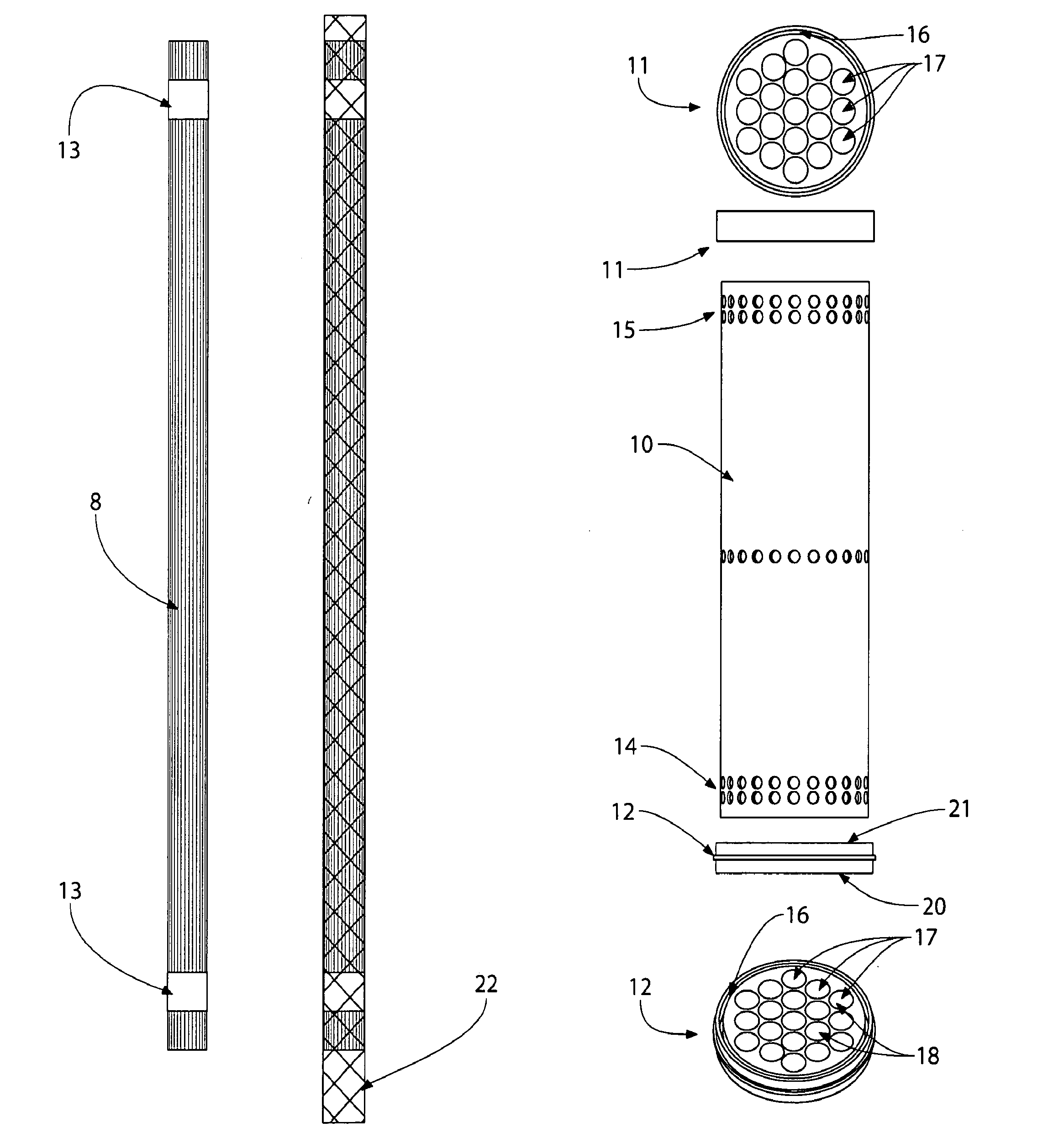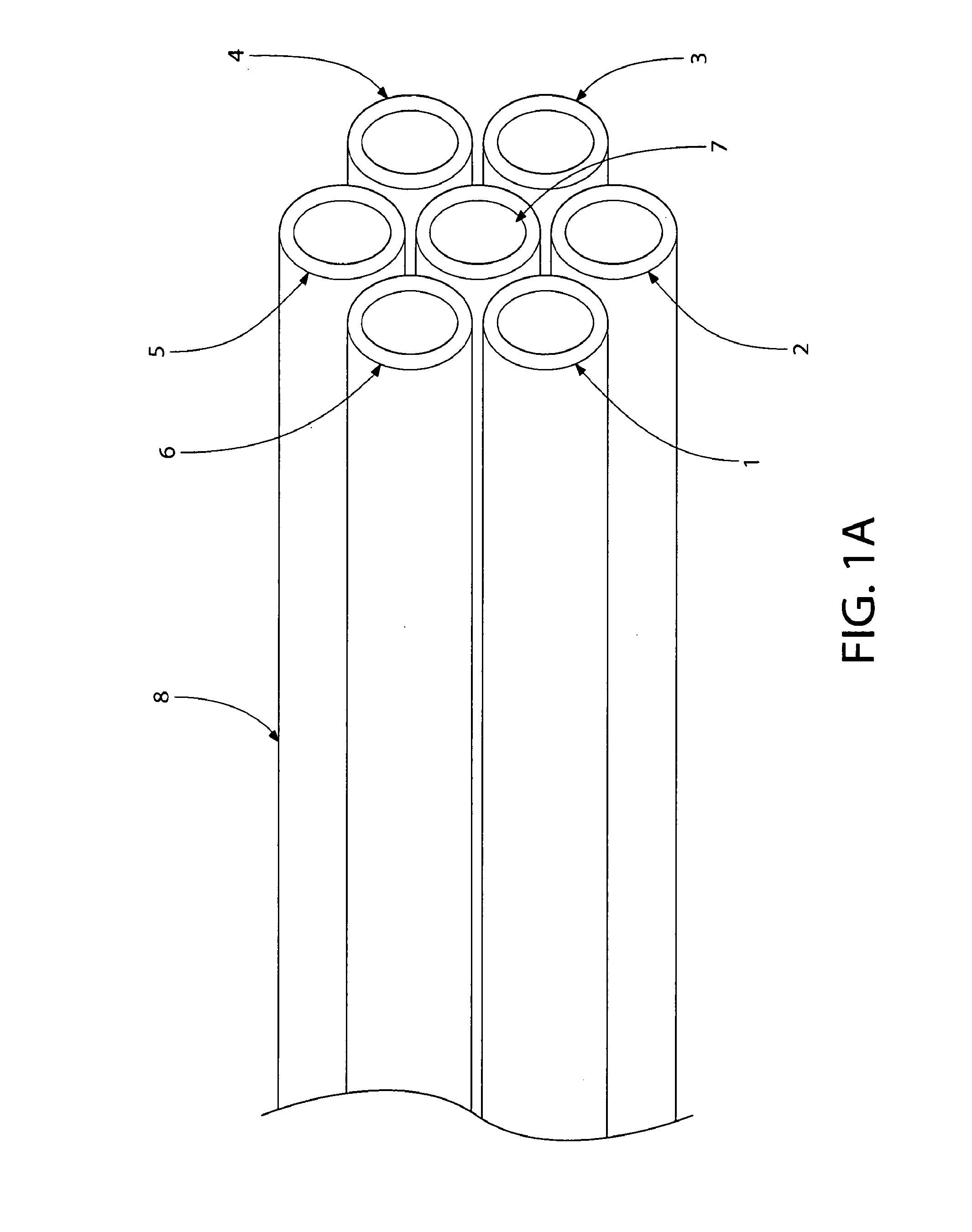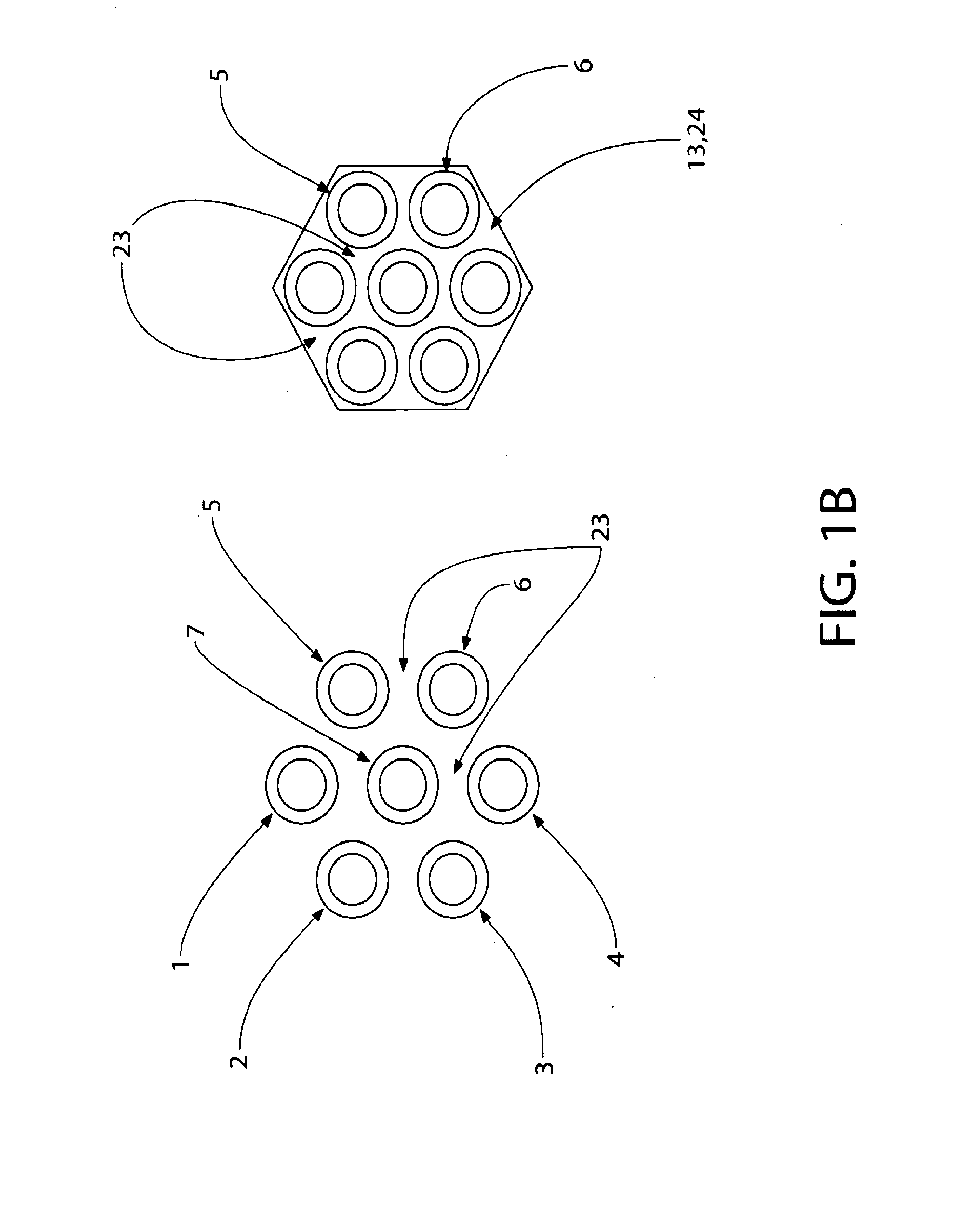Hollow fiber cartridges and components and methods of their construction
a technology of hollow fiber cartridges and components, which is applied in the field of production and assembly of hollow fiber modules, can solve the problems of hfc without adapters for directing retentate inflow and outflow to and from the hollow fibers, complicating cleaning, sterilization and validation of a process using such a complex system, and hfm to a larger scale system containing multiple modules, so as to reduce heat-induced stresses and reduce heat-induced stresses , the effect o
- Summary
- Abstract
- Description
- Claims
- Application Information
AI Technical Summary
Benefits of technology
Problems solved by technology
Method used
Image
Examples
example 1
Fixing the HFs to Each Other in a Hexagonal Cluster
[0160]A nozzle or multiple nozzles 37, from an injector or multiple injectors may be positioned in a manner that would deliver a fixative 24 to the HF cluster in the most efficient manner. There may be various methods for delivering such fixative; in one example, a multi nozzle device 37 (FIGS. 4A, 4B: wires and tubing for fixative are shown 63) is positioned adjacent to the fibers and radially disposed about the fibers at specific intervals. The nozzles, preferably, will be mechanized such that they may move towards the cluster of HFs prior or during fixative addition and retracted after addition. During the fixative addition phase, either the HF cluster can be advanced past the nozzles to affect addition of fixative 24 over a predetermined HF segment length 13; or alternately, the HF cluster may remain stationary while the nozzle assembly 37 advances along the fibers to spread the fixative 24 over a predetermined segment length 13...
example 2
Prefabricated Cluster End Caps
[0165]To form a unit cluster (“u-cluster”), it is conceivable that the “fixing” step to form a hexagonal end cap may be accomplished without applying a liquid fixative, as previously described. The same general results may be achieved using a pre-formed cap, where such cap can be mechanically added or snapped on to the ends of the HFs. The prefabricated cap is positioned along the HF cluster so that it can be mechanically rearranged to encapsulate the fibers and at the same time, assume the desired shape, preferably the hexagonal shape. An example of such a cap is shown in FIG. 7; its two possible configurations, linear cap or segment 79 (L-cap) and folded 80 (F-cap) are shown. The two configurations are inter-convertible as will be shown. The L-cap 79 contains six sub segments, numbered sequentially 81 to 86.
[0166]Adjacent segments 81 to 86 (FIG. 7) form “U” shaped grooves, channels or wells 87. The channels are designed to be positioned parallel to th...
PUM
| Property | Measurement | Unit |
|---|---|---|
| Pressure | aaaaa | aaaaa |
| Pressure | aaaaa | aaaaa |
| Angle | aaaaa | aaaaa |
Abstract
Description
Claims
Application Information
 Login to View More
Login to View More - R&D
- Intellectual Property
- Life Sciences
- Materials
- Tech Scout
- Unparalleled Data Quality
- Higher Quality Content
- 60% Fewer Hallucinations
Browse by: Latest US Patents, China's latest patents, Technical Efficacy Thesaurus, Application Domain, Technology Topic, Popular Technical Reports.
© 2025 PatSnap. All rights reserved.Legal|Privacy policy|Modern Slavery Act Transparency Statement|Sitemap|About US| Contact US: help@patsnap.com



